Can zombies give us insight into what it means to belong to the network society?
A Textaural Research Project
Why have zombies become popular now? What is it about zombies that lend themselves to a society infused with the internet? These are the questions that I attempt to answer in my presentation and essay Protocol Z: The distributed social organization of zombies. I argue that is the unique and paradoxical characteristics of the zombie that allow us to explore our anxieties of joining, being, and acting as networks.
Supplementary materials
This presentation was prepared for Critical Themes 2011 panel Not just another face in the cloud: social networks and new collectivity, at the New School New York, April 16, 2011.
- Presentation PDF
- Research Paper [18 pages]
- Shift PSA Poster, circa 1998–2001: The internet will eat your children
- Critical Themes 2011 [The New School, NYC]
- Presentation Audio [11 min MP3]
- Q&A Audio [12 min MP3]
Questions from Q&A
Is the individual irrelevant online?(the tension between individuals and the data they create)
What are the aspects of Protocol Z and how do they apply to internet today?
(facebook, viral videos)
Do zombies have agency in the network society?
How do we empathsize with the zombie when it appears to be removed of subjectivity?
Do zombies actually organize through protocol or is it just a fact of their nature?
Closing comment: The zombie is a useful metaphor for understanding the irreconcilable aspects of our world.
Paul Baran
Wrote a memorandum in 1964 for the Rand Company called On distributed communications: Introduction to distributed communications networks. In it he describes the usefulness for a distributed network to withstand a nuclear attack.
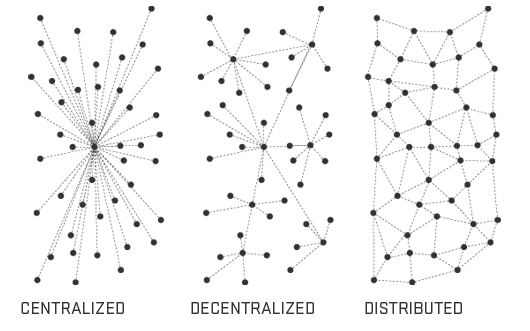
Protocol: Alexander Galloway
- — Protocol is a system of distributed management.
- — Protocol facilitates P2P relationships between autonomous entities.
- — Protocol is anti-hierarchy and anti-authority.
- — Protocol engenders localized decision making, not centralized.
- — Protocol is robust, flexible, and universal.
- — Protocol can accommodate massive contingency.
- — Protocol is the outcome (not the antecedent) of distributed behavior.
Canetti's Crowds
Four axioms of crowds
- — The crowd always wants to grow
- — Within the crowd there is equality
- — The crowd loves density
- — The crowd needs a direction
Eight characteristics
- — open or closed
- — quick or slow
- — rhythmic or stagnating
- — visible or invisible
The generic qualities of zombies
as described by Night of the living dead (1968)
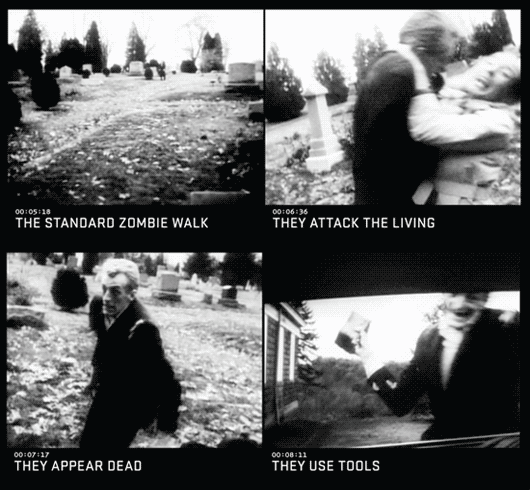
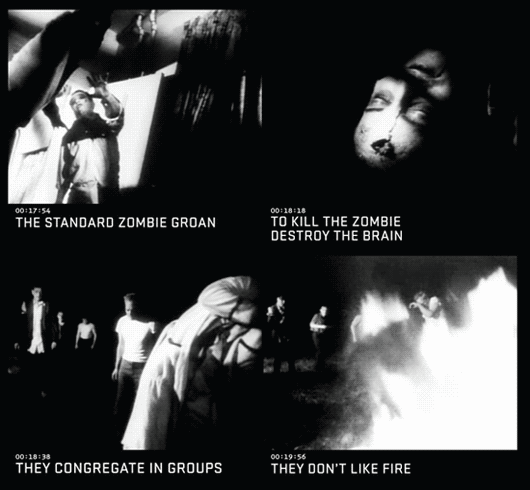
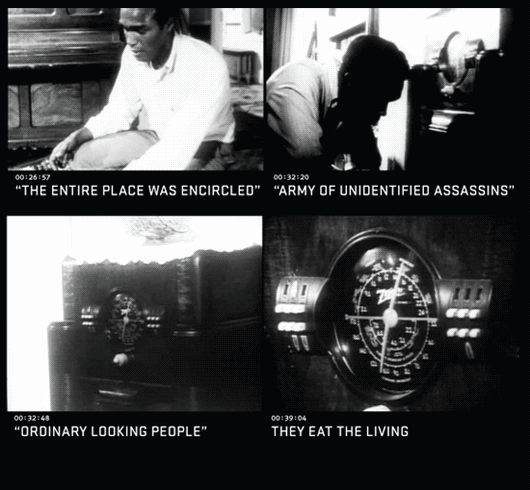
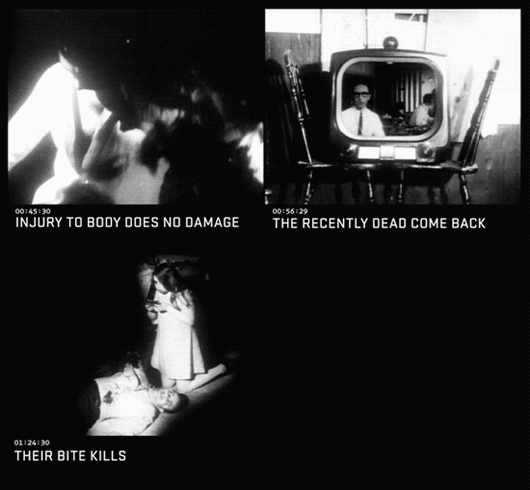
Excerpts from A zombie manifesto
[W]e are putting forth a zombie that does not yet exist: a thought-experiment that exposes the limits of posthuman theory and shows that we can get posthuman only at the death of the subject. [87]
Our manifesto proclaims the future possibility of the zombii, a consciousless being that is a swarm organism, and the only imaginable specter that could really be posthuman. [88]
The terror that comes from an identification of oneself with the zombie is, therefore, primarily a fear of the loss of consciousness. [89]
Thus, in some sense, we are all already zombies (but not yet zombiis), for they represent the inanimate end to which we each are destined. [90]
Humanity defines itself by its individual consciousness and its personal agency: to be a body without a mind is to be subhuman, animal; to be a human without agency is to be a prisoner, a slave. [90]
What underlies this symbolic duality, however, is that the zombie, neither mortal nor conscious, is a boundary figure. [90]
Protocol Z : Preliminary protocols for a zombii
The following is an exploration of the paradoxical nature of the zombii (as described by Lauro and Embry). By aligning the generic qualities of zombies with what Elias Canetti says of crowds, the list below represents a first attempt at defining the protocological nature of zombie organization.
- Z01
A zombii node is simultaneously both subject and object, the difference being zero. - Z02
A zombii always wants to transform invisible nodes into visible nodes (the need for growth). - Z03
A zombii node is simultaneously both singular and multiplicity: 1 visible, n–1 invisible. Therefore, even one visible zombie constitutes as a zombii. (the potential for growth). - Z04
A zombii always wants to transform closed networks into open networks. - Z05
- a) Transformation occurs when the distance between subject and object has been equalized to zero (the threshold of the subject-object, where it is both but neither).
- b) The zombii will continue the process of equalization until a subject has been transformed into a zombii node (reducing the living to death so that it can be reanimated).
- Z06
If the zombii’s density outweighs the subject’s intensity, the subject will be equalized beyond nodal transformation (consumed to the point where neither soul nor body remains). - Z07
The direction and speed of the zombii is determined by the intensity of subjects (the more numerous and lively the prey, the more velocity the crowd has). - Z08
The zombii is slow if there is low subjective intensity (waiting). Z9 The slow zombii is densest at the boundary between the open zombii network and and the closed subject network. - Z09
A slow zombii erupts into a quick zombii when the boundary between the open and closed network is ruptured. - Z10
The quick zombii is densest where the subject is most intense (the body). - Z11
The quick zombii discharges into a slow zombii when the distance between subject and object has been equalized (5a or 5b). - Z12
Nodes condense to increase visible density. - Z13
Nodes moan to increase invisible density. - Z14
The zombii stops growing and therefore decays when:- a) all invisible nodes have been transformed into visible nodes.
- b) there is only the open crowd of the zombii.
- Bishop, K. [2010] American Zombie Gothic
- Canetti, E. [1960] Crowds and power
- Castells, M. [2004] The Network Society
- Freud, S. [1922] Group Psychology and the Analysis of the Ego
- Galloway, A. [2004] Protocol
- Howe, J. [2009] Crowdsourcing
- Keen, A. [2007] The Cult of the Amateur
- Kirkman, R. [2006–] The Walking Dead
- Lanier, J. [2010] You Are Not a Gadget: a Manifesto
- Lauro, S. J. and Embry, K. [2008] A zombie manifesto
- Le Bon, G. [1896] The Crowd: A study of the popular mind
- Romero, G. A. [1968] Night of the Living Dead
- Smith?, Robert [2009] When zombies attack!
